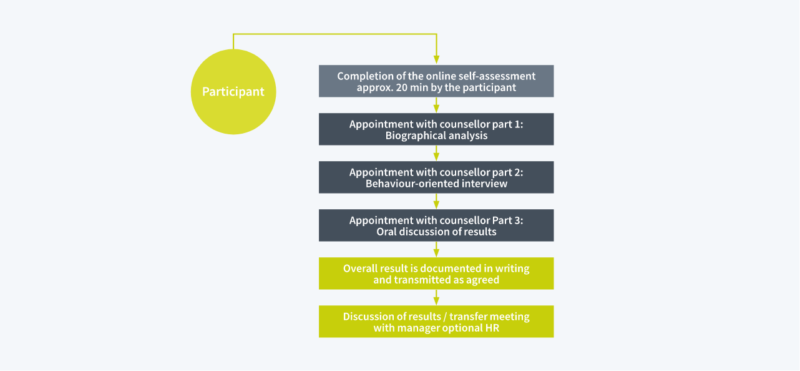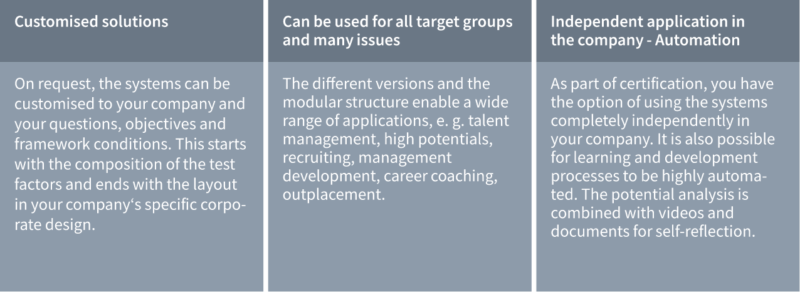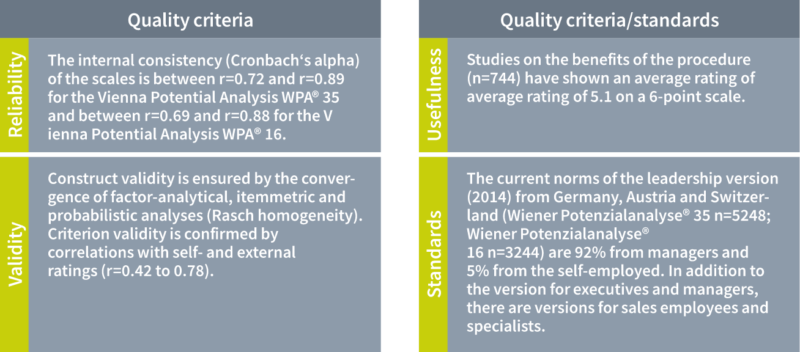Systems
Potential analyses
Potential analyses for development, transformation and recruiting
The success of a company is largely based on identifying and developing the right performance potential in people. With our potential analyses, we support you in the areas of recruiting, coaching, training, talent management, transformation and outplacement. Accuracy, manageability, acceptance and inspiration are the standards by which we measure ourselves.
Open video transcript
Alfred Lackner: Hello, I’m Alfred Lackner, Managing Director of Lackner & Kabas and founder of Balanced Six. In addition to my consultancy work, I am also active at university and an expert in personnel and management diagnostics. For over 30 years, we have been providing tools and instruments for visualising potential, skills, performance and the quality of cooperation.
We are guided by two principles: On the one hand, it is about scientific soundness. We work together with the University of Vienna. Mr. Dr. Kabas wrote his dissertation on the Balanced Six potential analysis. On the other hand, at least as important, practical orientation. We do everything we can to ensure that our tools and instruments are effective, understandable and helpful.
But let’s listen to what customers say about the balanced six potential analysis.
Robert Angel, Managing Director of SMC: ‘The potential analysis is the best and most competent method in personnel development.’
Daniela Albrecht, Head of HR at TUI: ‘Because the tool is very clear, transparent and easy to understand for the participants on the one hand and scientifically sound on the other.’
Manuela Raith, Vice Rector Vetmeduni Vienna: ‘Well-founded, accurate analyses that are communicated in an appreciative manner.’
Herwig Kummer, Head of Human Resources Management at ÖAMTC: ‘Clarity and orientation.’
Dr. Günter Gigacher, Managing Director GLOCK: ‘High reliability and an amazingly high, well-descriptive methodology of how a person is equipped.’
Harald Gorucan, Head of HR at Saubermacher: ‘An effective and comprehensible tool.’
Alfred Lackner: When is a potential analysis useful? In the course of our professional lives, we continuously transform potential, assets and talents into competences. And at certain points in this professional development, the question arises: does a person have sufficient potential to successfully master the next career step, the next level of greater responsibility?
And this is precisely the question that a potential analysis answers. It also provides precise information on which development measures are helpful and recommended for this next step.
If you are interested in familiarising yourself with the Balanced Six potential analysis, trying it out and testing it, then I would like to invite you to get in touch with our cooperation partner.
I wish you all the best for the future in your profession.
For managers, sales staff, specialists and other employees as well as for teams
Find out more about our potential analyses
Developed by human resources psychologists
Our potential analyses were developed together with the University of Vienna. The itemmetric procedure fulfills the criteria of probabilistic modern test theory, is continuously developed further and provided with current target group-specific standards. At the same time, many years of practical experience in the respective subject areas were utilized.
The result is a system that describes personality in relation to the requirement situation very accurately and based on evidence.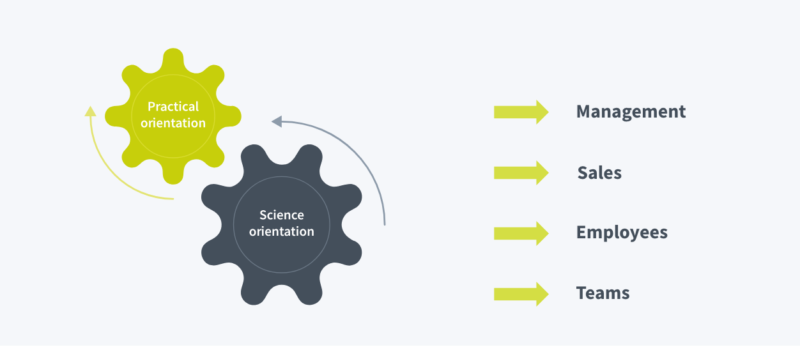
Success in the context of requirements
Our potential analyses were developed together with the University of Vienna. The itemmetric procedure fulfills the criteria of probabilistic modern test theory, is continuously developed further and provided with current target group-specific standards. At the same time, many years of practical experience in the respective subject areas were utilized.
The result is a system that describes personality in relation to the requirement situation very accurately and based on evidence.
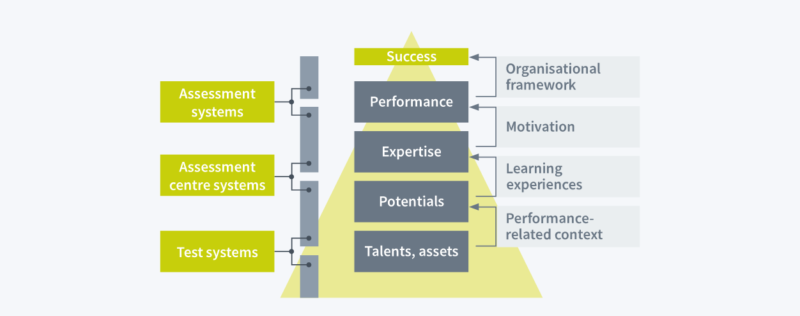
Multimethodology
We do not simply leave the authority of the assessment to a questionnaire. Depending on the requirements and questions, we combine the results of the potential analysis with the results of other instruments (biographical analysis, interviews, new: assessment center) to produce an overall result. This describes the effective competencies and the potential that can still be developed.
Accuracy: When different sources of information produce similar results.
Stability: We assume a certain stability in the description of the target area.
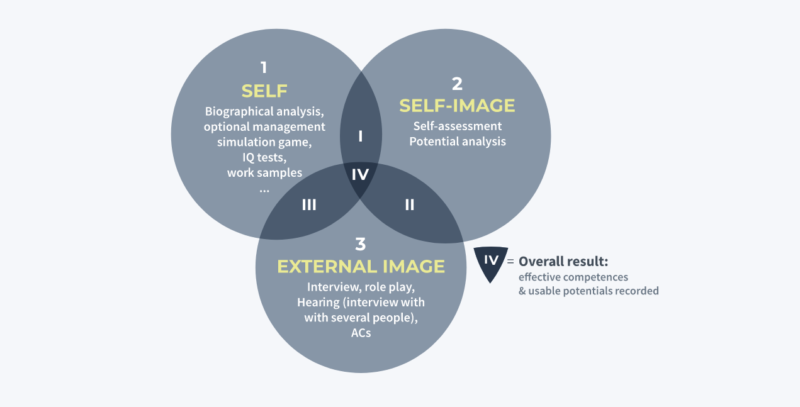
The measurement model
The system shows which needs, motives and skills are more in the foreground or more in the background for a person. The basic assumption is that the fit between job requirements and personal characteristics is crucial for success.
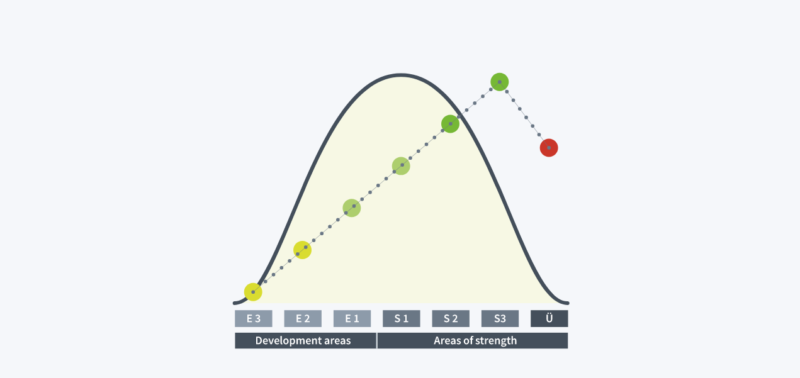
The result is based on a self-assessment. This is compared with a norm sample. This determines how similar or dissimilar your own self-assessment is to that of others. From this, opportunities and risks in coping with the job requirements can be derived.
The comparison population (“norm”) is made up of people from the target group. This is a broad population of at least 2000 people in each case). The extreme ranges E3 and Ü are 5-7% of these people.
In addition, there is a self-assessment using bipolar questions at the end of the procedure, which is calculated directly without standardization. This second measurement supplements the comparison of the self-assessment with the comparison group with the person’s own calibration, i.e. with what the person perceives to be consistent for themselves. They can confirm or question the norm comparison. Consistencies and inconsistencies (“blind spots” but also development directions) become visible.
In addition to the individual assessments, the results for selected groups of participants (e.g. leadership or sales teams or certain management levels in the company as a whole) can be aggregated in an overall assessment with a view to strategic evaluation objectives to be defined.
Summary
Risks / opportunities
Strengths (strengthen strengths)
Development issues (neutralize weaknesses)
Recommendation (development plans / learning journeys)
In connection with the promotion of the company as a whole, opportunity and risk analyses can be prepared and conclusions derived for further action.
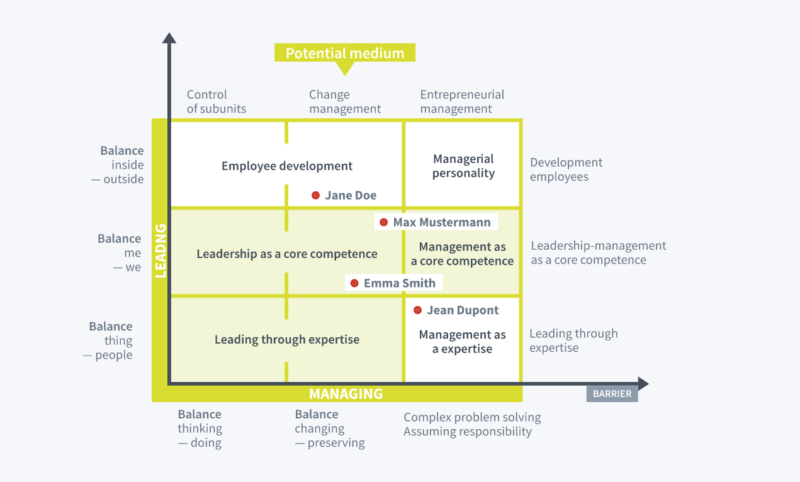
In terms of content, our potential analyses address very fundamental balances that can be easily combined with your company’s values and guidelines. They are based on the Balanced Six Model (copyright) according to Alfred Lackner. This is a classification scheme that helps to systematize a wide variety of job requirements and make the relationships between them visible. It is a balance model and a metamodel. It describes the relevant requirement areas for the balance of opposing forces.
The active forces describe an area of competence on a meta-level. Below the meta-level, specific competencies can be assigned to the active forces.
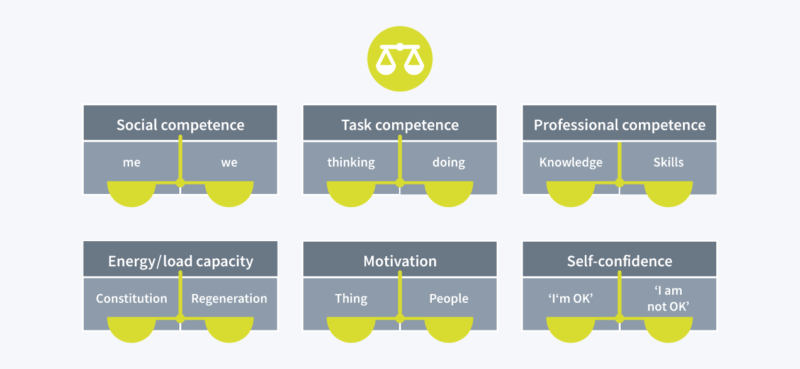
Self-explanatory presentation and detailed documentation
Simple online specification and online evaluation
The application is quick and easy to use via our online portal. The results are available immediately and can be accessed from anywhere.
